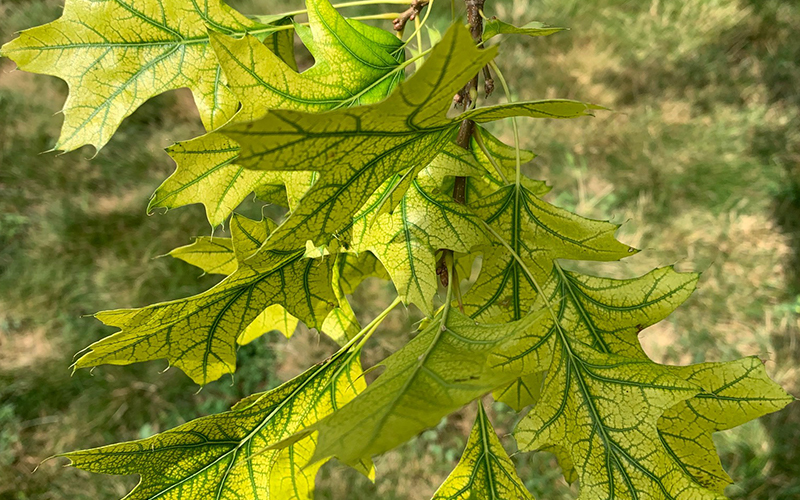This time of year, we field a lot of calls about trees with yellow leaves. Drive around and you will see them scattered throughout the landscape. The bright yellow stands in contrast to the common shades of green of other trees. In the spring and early summer, the emergent leaves of some cultivars of honey locust can have yellow leaves which provides an interesting aesthetic. Unfortunately, the yellow leaves we see now are a symptom of a nutrient deficiency. When the condition is chronic, the affected trees tend to decline.
This condition, referred to as chlorosis, typically occurs when elemental iron is unavailable in the leaves resulting in the breakdown of chlorophyl (the green stuff that absorbs light for photosynthesis). When trees cannot efficiently photosynthesize (convert sunlight into sugar or tree food) they struggle to survive. Without digging too deep into soil chemistry, just know that iron in the soil cannot be absorbed by the tree because the pH (measure of acidity) is too high.
Many communities in our area are built on ground with a limestone bedrock which keeps soil alkaline. Also, urban infrastructure relies heavily on concrete and limestone for building foundation, sidewalks, and roads with the same result. Add to this a dependency on landscape trees such as oak, sweetgum, and river birch that prefer acidic soils and we have a lot of yellow leaved, unhealthy trees.
Here are some things you can do to avoid green up our urban forest:
- Get a soil test before you plant a tree. If the pH is high, avoid acid preferring tree species. Easier to change species than soil pH.
- If you have a young tree that is chlorotic, annual applications of granular sulfur and iron can moderate soil pH and improve iron accessibility.
- If you have a mature tree that is chlorotic, we can inject iron directly into the trunk that bypasses soil issues and promotes green leaves for a 2–3-year period.
If you have yellow leaves Good’s Tree and Lawn Care can help. Call to schedule an appointment with one of our arborists.


